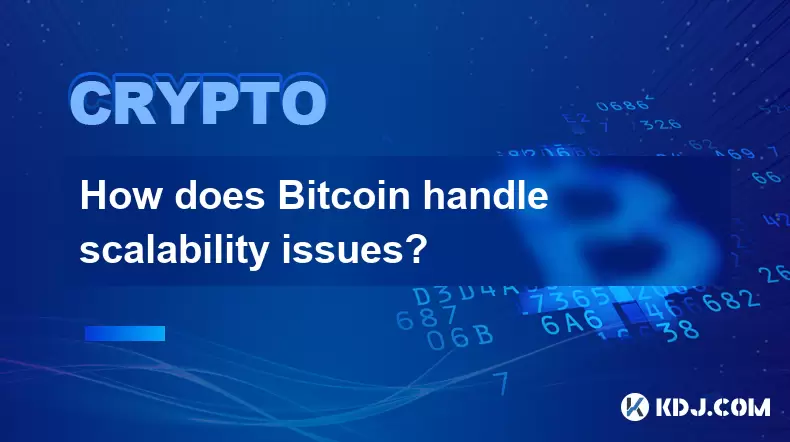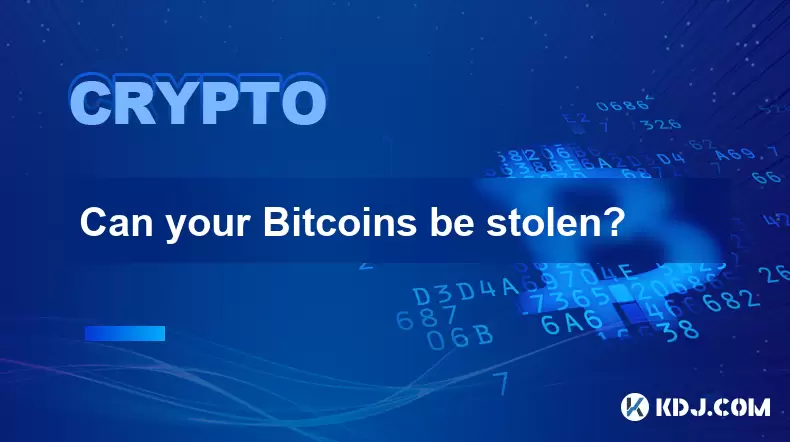-
 Bitcoin
Bitcoin $117300
1.93% -
 Ethereum
Ethereum $3866
5.21% -
 XRP
XRP $3.109
3.81% -
 Tether USDt
Tether USDt $1.000
0.01% -
 BNB
BNB $781.5
1.52% -
 Solana
Solana $173.0
2.95% -
 USDC
USDC $0.9998
0.00% -
 Dogecoin
Dogecoin $0.2181
6.31% -
 TRON
TRON $0.3403
0.93% -
 Cardano
Cardano $0.7683
3.91% -
 Hyperliquid
Hyperliquid $40.08
5.09% -
 Sui
Sui $3.742
7.38% -
 Stellar
Stellar $0.4152
4.69% -
 Chainlink
Chainlink $18.40
10.03% -
 Bitcoin Cash
Bitcoin Cash $580.6
2.21% -
 Hedera
Hedera $0.2543
4.25% -
 Ethena USDe
Ethena USDe $1.001
-0.01% -
 Avalanche
Avalanche $22.94
3.52% -
 Litecoin
Litecoin $121.8
2.24% -
 UNUS SED LEO
UNUS SED LEO $8.955
-0.41% -
 Toncoin
Toncoin $3.330
3.03% -
 Shiba Inu
Shiba Inu $0.00001270
2.97% -
 Uniswap
Uniswap $10.34
6.42% -
 Polkadot
Polkadot $3.805
3.86% -
 Dai
Dai $1.000
0.01% -
 Bitget Token
Bitget Token $4.429
1.80% -
 Cronos
Cronos $0.1495
4.65% -
 Monero
Monero $255.6
-9.08% -
 Pepe
Pepe $0.00001096
4.40% -
 Aave
Aave $282.9
7.85%
What is the difference between Bitcoin and other cryptocurrencies?
Bitcoin was designed as digital gold with scarcity and security in mind, while altcoins like Ethereum prioritize programmability and scalability for diverse decentralized applications.
Aug 08, 2025 at 12:01 am

Core Design Philosophy and Purpose
The foundational difference between Bitcoin and other cryptocurrencies lies in their original design intent. Bitcoin was created as a decentralized peer-to-peer electronic cash system, aiming to eliminate reliance on traditional financial institutions. Its whitepaper, authored by Satoshi Nakamoto, emphasized trustless transactions, limited supply, and financial sovereignty. In contrast, many alternative cryptocurrencies, commonly referred to as altcoins, were developed with expanded use cases. For instance, Ethereum introduced the concept of smart contracts, enabling programmable agreements without intermediaries. Other projects focus on privacy, scalability, or specific industry applications such as supply chain tracking or decentralized identity. This divergence in purpose shapes their technical architecture and ecosystem development.
Consensus Mechanism and Network Security
Bitcoin relies on the Proof of Work (PoW) consensus mechanism, where miners compete to solve complex cryptographic puzzles to validate transactions and secure the network. This process requires substantial computational power and energy, contributing to Bitcoin's robust security model. The immutability of its blockchain is reinforced by the high cost of launching a 51% attack. Many other cryptocurrencies have adopted alternative consensus models. For example, Cardano and Polkadot utilize Proof of Stake (PoS), where validators are chosen based on the amount of cryptocurrency they "stake" as collateral. This method reduces energy consumption and enables faster transaction finality. Some newer blockchains use Delegated Proof of Stake (DPoS) or Byzantine Fault Tolerance (BFT) variants to enhance throughput and efficiency, though these may trade off some degree of decentralization.
Transaction Speed and Scalability
One of the most noticeable differences is transaction processing capability. Bitcoin processes approximately 3 to 7 transactions per second (TPS) due to its 1 MB block size limit and 10-minute block time. This design prioritizes security and decentralization over speed. In comparison, Solana claims to handle over 65,000 TPS using a combination of Proof of History and Proof of Stake. BNB Chain and Avalanche also offer significantly higher throughput, making them more suitable for decentralized applications (dApps) requiring rapid execution. To address its scalability limitations, Bitcoin has implemented layered solutions such as the Lightning Network, which enables off-chain micropayments with near-instant settlement. However, these solutions are not native to the base layer and require additional setup.
Supply Model and Monetary Policy
Bitcoin enforces a hard-capped supply of 21 million coins, creating a deflationary monetary policy. This scarcity is hardcoded into its protocol and is a central argument for its value proposition as "digital gold." The issuance rate decreases every 210,000 blocks through a process known as halving, which reduces miner rewards by 50%. Other cryptocurrencies exhibit diverse economic models. Ethereum transitioned to a deflationary model post-Merge, where transaction fees are burned, potentially reducing total supply over time. Dogecoin, originally created as a meme, has an inflationary supply with no maximum cap, issuing 10,000 DOGE per block indefinitely. Ripple (XRP) pre-mined all 100 billion tokens at launch, releasing them gradually through escrow mechanisms. These differing supply dynamics influence investor behavior, token utility, and long-term economic sustainability.
Smart Contract and Ecosystem Capabilities
Bitcoin's scripting language is intentionally limited, supporting only basic transaction types to maintain security and simplicity. It does not natively support smart contracts or complex decentralized applications. While projects like Stacks enable smart contracts on Bitcoin via a layered approach, functionality remains constrained compared to purpose-built platforms. In contrast, Ethereum provides a Turing-complete virtual machine (EVM), allowing developers to deploy self-executing contracts with customizable logic. This has fostered a vast ecosystem of decentralized finance (DeFi) protocols, NFT marketplaces, and DAOs. Blockchains like Polygon, Fantom, and Arbitrum are EVM-compatible, enabling seamless migration of tools and applications. This programmability makes them more attractive for developers building interactive, multi-functional dApps.
Development Governance and Community Structure
Bitcoin operates under a highly conservative governance model, where changes require broad consensus among miners, developers, and node operators. Major upgrades, such as SegWit or Taproot, undergo years of debate and testing before activation. This slow evolution prioritizes stability and network integrity. Other cryptocurrencies often employ more flexible governance mechanisms. Tezos and Dash implement on-chain governance, allowing token holders to vote directly on protocol upgrades. Polkadot uses a council and referendum system to coordinate network evolution. These models enable faster adaptation but can lead to centralization if voting power is concentrated. Additionally, many altcoins are managed by foundations or core development teams with significant influence over roadmap decisions, whereas Bitcoin lacks a central authority, relying on open-source collaboration.
Interoperability and Cross-Chain Functionality
Bitcoin functions as a standalone network with limited native interoperability. It cannot directly communicate with other blockchains, requiring third-party solutions like wrapped Bitcoin (wBTC) to bring its value into ecosystems such as Ethereum. This process involves custodians and trust assumptions, introducing counterparty risk. Newer cryptocurrencies are designed with cross-chain communication in mind. Cosmos uses the Inter-Blockchain Communication (IBC) protocol to enable direct data transfer between independent chains. Chainlink and Wormhole provide cross-chain oracle and messaging services, connecting disparate networks. Polkadot employs parachains and a relay chain to facilitate secure inter-chain transactions. These architectures support a more interconnected blockchain landscape, allowing assets and data to move fluidly across platforms.
Frequently Asked Questions
- Can Bitcoin be used for smart contracts like Ethereum?
Bitcoin does not support complex smart contracts natively. While simple multi-signature and time-locked transactions are possible, advanced programmability requires layer-2 solutions like Stacks or Rootstock (RSK). These platforms add smart contract functionality but operate separately from Bitcoin’s base layer.Why does Bitcoin use Proof of Work instead of Proof of Stake?
Proof of Work was chosen to ensure security and prevent Sybil attacks in a trustless environment. It aligns incentives through computational investment, making attacks economically unfeasible. The design prioritizes decentralization and resilience over energy efficiency.Are all cryptocurrencies limited to 21 million like Bitcoin?
No. Only Bitcoin has a 21 million supply cap. Ethereum has no fixed limit, Dogecoin is inflationary, and XRP has a total supply of 100 billion. Each cryptocurrency defines its own monetary policy based on its goals.How do transaction fees differ between Bitcoin and other blockchains?
Bitcoin fees fluctuate based on network congestion and are paid to miners. During peak usage, fees can exceed $50. Blockchains like Solana and Polygon offer near-zero fees due to higher throughput and different economic models.
Disclaimer:info@kdj.com
The information provided is not trading advice. kdj.com does not assume any responsibility for any investments made based on the information provided in this article. Cryptocurrencies are highly volatile and it is highly recommended that you invest with caution after thorough research!
If you believe that the content used on this website infringes your copyright, please contact us immediately (info@kdj.com) and we will delete it promptly.
- Bitcoin Reserve, Gold Revaluation, Congress Considers: A New Era for US Financial Strategy?
- 2025-08-08 04:30:12
- KAITO's Momentum: Can It Reclaim Support Amidst Social Media Scrutiny?
- 2025-08-08 04:30:12
- Pi Coin's dApp and AI Potential: Building a Decentralized Future
- 2025-08-08 02:30:12
- Ruvi AI Takes the Lead: Outshining Dogecoin on CoinMarketCap
- 2025-08-08 02:50:12
- Cryptos Under $1: Is Ripple Still the King?
- 2025-08-08 03:50:12
- Cold Wallet, Bonk Price, ICP Price: Navigating the Crypto Landscape in 2025
- 2025-08-08 03:56:12
Related knowledge

Can the Bitcoin protocol be changed?
Aug 07,2025 at 01:16pm
Understanding the Bitcoin ProtocolThe Bitcoin protocol is the foundational set of rules that govern how the Bitcoin network operates. It defines every...

What are some common misconceptions about Bitcoin?
Aug 07,2025 at 07:22pm
Bitcoin is Just Like Regular MoneyA widespread misconception is that Bitcoin functions identically to traditional fiat currencies like the US dollar o...

Is Bitcoin a solution for inflation?
Aug 08,2025 at 04:57am
Understanding Inflation and Its Impact on Traditional CurrenciesInflation refers to the sustained increase in the price of goods and services over tim...

How does Bitcoin handle scalability issues?
Aug 07,2025 at 10:54am
Understanding Bitcoin’s Scalability ChallengeBitcoin’s design prioritizes decentralization, security, and immutability, but these principles come with...

Do you need to understand technology to use Bitcoin?
Aug 07,2025 at 06:17am
Understanding the Basics of BitcoinTo engage with Bitcoin, one does not need a deep understanding of the underlying technology, much like how individu...

Can your Bitcoins be stolen?
Aug 07,2025 at 03:28am
Understanding the Security of Bitcoin OwnershipThe decentralized nature of Bitcoin means that no central authority controls the network, placing the r...

Can the Bitcoin protocol be changed?
Aug 07,2025 at 01:16pm
Understanding the Bitcoin ProtocolThe Bitcoin protocol is the foundational set of rules that govern how the Bitcoin network operates. It defines every...

What are some common misconceptions about Bitcoin?
Aug 07,2025 at 07:22pm
Bitcoin is Just Like Regular MoneyA widespread misconception is that Bitcoin functions identically to traditional fiat currencies like the US dollar o...

Is Bitcoin a solution for inflation?
Aug 08,2025 at 04:57am
Understanding Inflation and Its Impact on Traditional CurrenciesInflation refers to the sustained increase in the price of goods and services over tim...

How does Bitcoin handle scalability issues?
Aug 07,2025 at 10:54am
Understanding Bitcoin’s Scalability ChallengeBitcoin’s design prioritizes decentralization, security, and immutability, but these principles come with...

Do you need to understand technology to use Bitcoin?
Aug 07,2025 at 06:17am
Understanding the Basics of BitcoinTo engage with Bitcoin, one does not need a deep understanding of the underlying technology, much like how individu...

Can your Bitcoins be stolen?
Aug 07,2025 at 03:28am
Understanding the Security of Bitcoin OwnershipThe decentralized nature of Bitcoin means that no central authority controls the network, placing the r...
See all articles

























































































